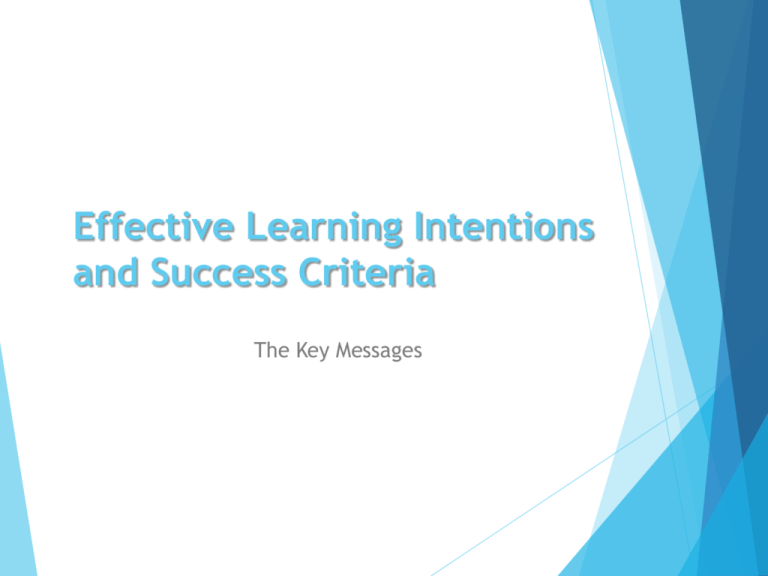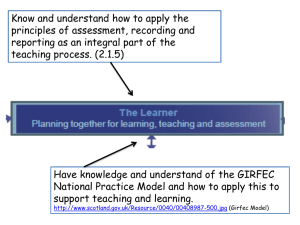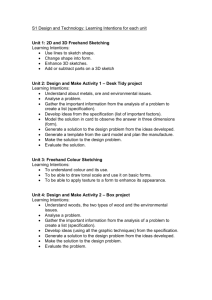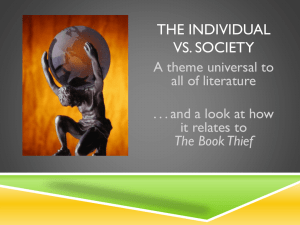Lisa McGlade – Beeslack
advertisement

Effective Learning Intentions and Success Criteria The Key Messages This presentation is based on the following assumptions: Learning intentions and success criteria are not new concepts and we will all have examples and ideas about how and when we use learning intentions and success criteria. There is, however, some understandable confusion about what constitutes effective* learning intentions and success criteria. We all appreciate that learning intentions and success criteria are important for creating focused, purposeful learning. It is useful to know where we are getting things right and where there is scope for improvement. *effective in this sense means that the learning intentions focus on learning rather than tasks and the success criteria makes explicit what success looks or sounds like. Why are we over-egging this? It is not a difficult concept to grasp! Hattie’s take on Learning Intentions and Success Criteria https://www.youtube.com/watch?v=dvzeou_u2hM Key messages: Learning intentions should be about what learners are supposed to learn, not what they should do. It’s not about the task. Effective learning intentions and success criteria help us bridge the gap between those who can do it anyway and those who are struggling. An example: Mike: “Lisa, explain how a corrie is formed.” Lisa: (panicking ever so slightly!): “It’s to so with glaciers; as the ice slides down the hill, it creates an armchair like hollow in the rock. Is that what you’re looking for?” Mike: “On a basic level, yes.” Lisa: “What else do I need to mention?” Mike: “Processes like abrasion and plucking.” We need to negotiate the starting point for learning with pupils. The aim should also be to make students self regulatory so that they can write success criteria as well as you can. Learning is a process, not an end goal. Where possible, we have to be flexible about the speed of that process. Pupils must know exactly where they are in their learning and where they need to go next and learning intentions and success criteria are the firsts steps in this process. The learning intention is the goal. We are learning to: analyse/describe/explain/assemble/characterise/challenge Example: ‘We are learning to explain how the actions of the suffragettes led to women getting the vote becomes’: ‘We are learning to explain the impact of the actions of a group of individuals in history.’ Context: Women’s suffrage movement – the suffragettes. The success criteria outlines the strategies needed to achieve the LI goal – the main things to do, include, focus on. “Success criteria summarise the key steps the students need in order to fulfil the learning intention – the main things to do, include or focus on.” Shirley Clarke Effective learning intentions: Linked to the actual learning, not the context. Not simply a description of the activity. Often describe transferable skills. Reflect the language of the experience and outcome and the skills and knowledge within it. Focused, straightforward and easy to understand. Agreed in discussion with the learners. Education Scotland Effective Success Criteria linked to the learning intention; Avoids repetition of the learning intention. specific to an activity; Emphasise the process, rather than end product: knowing, thinking or using skills. Reflects the skills and knowledge that you will see the children and young people employing. discussed and agreed with pupils prior to undertaking the activity; provides a scaffold and focus for pupils while engaged in the activity; and used as the basis for feedback and peer-/self-assessment. Reflect the skills and knowledge that you will see the children and young people employing. Education Scotland Where does all of this fit into the big picture? E+0s Significant Aspects of Learning Skills for life learning and work Effective learning intentions Effective success criteria Target setting Assessment capable learners Visible learning in action!





